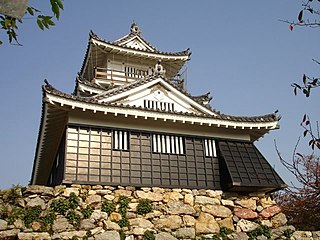 W
WThe Arai Barrier was a security checkpoint which was established by the Tokugawa Shogunate on the Tōkaidō highway connecting the capital of Edo with Kyoto in Edo period Japan. Its official name was the Imagire Barier . In 1921, the site was recognized as a National Historic Site, and in recognition that it had only surviving Edo-period checkpoint structure remaining in the country, its status was upgraded to that of a Special National Historic Site in 1962.
 W
WThe Atagawa Tropical & Alligator Garden is a botanical garden with alligators located in the Fuji-Hakone-Izu National Park at 971-9 Naramoto, Higashiizu-cho, Kamo, Shizuoka Prefecture, Japan. It is open daily. An admission fee is charged.
 W
WGyokusen-ji (玉泉寺) is a Buddhist temple located in the city of Shimoda, Shizuoka Prefecture, Japan. It is noteworthy in that it served as the first American consulate in Japan. The temple and its grounds were designated as a National Historic Site of Japan in 1951.
 W
WHamamatsu Castle is a replica hirayama-style Japanese castle. It was the seat of various fudai daimyō who ruled over Hamamatsu Domain, Tōtōmi Province, in what is now central Hamamatsu, Shizuoka Prefecture, Japan under the Edo period Tokugawa shogunate. It is also called Shusse Castle .
 W
WThe Hamamatsu Museum of Musical Instruments is a museum in Hamamatsu, Japan. It is the first public museum about musical instruments in Japan. The museum contains collections of different types of instruments from various parts of the world.
 W
WKakegawa Castle is a hirayama-style Japanese castle. It was the seat of various fudai daimyō clans who ruled over Kakegawa Domain, Tōtōmi Province, in what is now central Kakegawa, Shizuoka Prefecture, Japan.
 W
WThe MOA Museum of Art is a private museum in the city of Atami, Japan.
 W
WRyōsen-ji (了仙寺) is a Nichiren-sect Buddhist temple in the city of Shimoda, Japan. It is noteworthy as the location of the signing ceremony for the Treaty of Amity and Commerce between the Tokugawa shogunate of Japan and the United States of America on July 29, 1858. Due to this connection, the temple grounds and main hall have been designated as a National Historic Site.
 W
WThe Sakuma Rail Park was an open-air railway museum located next to Chūbu-Tenryū Station on the Iida Line in Hamamatsu, Shizuoka, Japan. It was operated by Central Japan Railway Company, and was opened on 21 April 1991. The museum closed on 1 November 2009 in preparation for the move to a new SCMaglev and Railway Park in Nagoya in 2011.
 W
WThe Sano Art Museum is a private art museum, located in the Nakata neighborhood of the city of Mishima, Shizuoka Prefecture, central Japan. The museum was founded in 1966 by Mishima-born Sano Ryūichi, founder of the chemical company Tekkōsha and recipient of the Second Order of the Sacred Treasure. The museum has a collection of over 2500 items, and is especially noted for its collection of Japanese swords.
 W
WThe Shijimizuka ruins is an archaeological site containing a late to final Jōmon period settlement trace and shell middens, located in what is now Naka-ku, Hamamatsu, Shizuoka Prefecture, Japan. The settlement was inhabited from approximately 2000 BC to 1000 BC. In 1959, the site was designated a National Historic Site and expanded and opened to the public as an archaeological park in 1984. A number of pit dwellings have been reconstructed. The site also preserves a late-19th-century farmhouse.
 W
WThe Shizuoka Prefectural Museum of Art is a prefectural museum in Shizuoka City, Japan.
 W
WThe Toi Gold Museum is a museum on the subject of gold mining in ancient and modern Japan, which is located next to the Toi gold mine in the city of Izu, Shizuoka, Japan.
 W
WToro is an archaeological site in Suruga Ward in Shizuoka City, 130 kilometres (81 mi) southwest of Tokyo, Japan. The site contains the ruins of a settlement which dates to the 1st century CE, in the late Yayoi period. Discovered in 1943, it was excavated from 1947 to 1948 and designated a Special Historic Site of Japan in 1952. Toro is also the name of the area surrounding it in the Japanese addressing system.
 W
WUehara Museum of Modern Art opened in 2000 in Shimoda, Shizuoka Prefecture, Japan, to house the collection of Uehara Shōji of Taisho Pharmaceutical. The collection includes works by Corot, Monet, Cézanne, Renoir, Fujishima Takeji, and Kishida Ryūsei. Adjacent is the Uehara Museum of Buddhist Art (上原仏教美術館), which opened in May 1983.